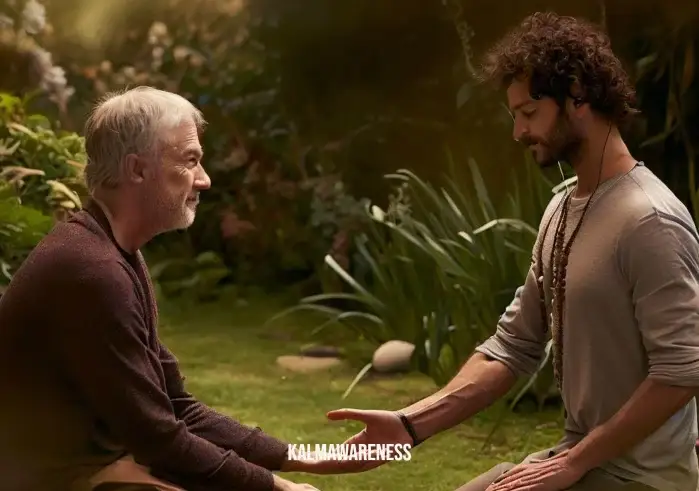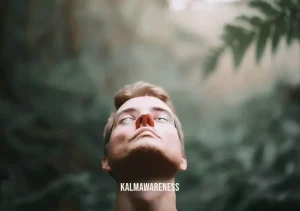The Playful Rabbit Pose in Yoga
In this chapter, we’ll delve into the wonderful world of yoga, exploring a unique and playful pose known as the Rabbit Pose. Get ready to hop into this invigorating posture that combines flexibility, mindfulness, and a touch of whimsy. Whether you’re a seasoned yogi or just starting on your yoga journey, the Rabbit Pose is a delightful addition to your practice.
Pose Details
| Description | Explanation |
|---|---|
| Pose Name | Rabbit Pose |
| Original Name | Sasangasana (derived from “Sasanka” meaning rabbit in Sanskrit) |
| Difficulty Level | Intermediate |
| Pose Category | Forward Bend |
| Exercise Duration | For beginners: 30 seconds to 1 minute |
| For advanced practitioners: 1 to 3 minutes |
Unleashing the Playful Rabbit
The Rabbit Pose, or Sasangasana, is an intermediate-level yoga posture that gracefully melds elements of flexibility, introspection, and rejuvenation. It belongs to the category of forward bends, known for their calming effects on the mind and body.
Step by Step Guide:
- Preparation: Begin in a kneeling position (Vajrasana) with your buttocks resting on your heels, ensuring your spine is erect and your head is held high.
- Hand Placement: Gently place your palms on the back of your heels with your fingers pointing toward your toes. Ensure your fingers are spread wide for stability.
- Inhale: As you breathe in deeply, lift your hips up towards the ceiling while maintaining the connection between your palms and heels.
- Exhale and Bend: As you exhale, start to bend forward, lowering your forehead towards the floor. Keep your elbows close to your body as you fold forward.
- Arch Your Back: While your forehead is gently touching the floor, arch your back by lifting your hips higher and drawing your shoulder blades closer together.
- Chin to Chest: As you continue to arch your back, gently tuck your chin towards your chest, lengthening the back of your neck.
- Resting Position: Rest the crown of your head on the floor, ensuring your neck feels comfortable and supported.
- Focus on Breathing: Take slow, deep breaths, allowing your body to relax and sink deeper into the pose with each exhale.
- Hold the Pose: Stay in the Rabbit Pose for the recommended duration according to your level of practice.
- Release: To release the pose, gently lift your head and bring your chin back to a neutral position. Use your hands to support your body as you rise back up to a kneeling position.

The Enlightening Benefits and Variations of the Rabbit Pose in Yoga
In the first part of our journey, we hopped into the playful Rabbit Pose, exploring the step-by-step guide to mastering this invigorating yoga posture. Now, it’s time to dive deeper into the numerous benefits that Sasangasana offers, as well as considerations for practitioners who may find this pose challenging. Additionally, we’ll discover how to modify the pose to cater to different levels of experience and flexibility.
Benefits of the Rabbit Pose in Yoga
The Rabbit Pose in yoga, or Sasangasana, is a delightful posture that brings a plethora of benefits to both the body and mind. Let’s explore some of the enlightening advantages of incorporating this pose into your regular yoga practice:
- Spinal Flexibility: As you bend forward in the Rabbit Pose, it stretches and flexes the entire length of your spine, helping to improve spinal mobility and maintain its natural curvature.
- Digestive Stimulation: The gentle compression of the abdomen in this pose aids in massaging the digestive organs, promoting better digestion and alleviating bloating or discomfort.
- Relaxation and Calm: The forward bending nature of Sasangasana has a calming effect on the nervous system, helping to reduce stress and anxiety levels.
- Heart Opening: As you arch your back and draw your shoulder blades together, the Rabbit Pose opens up the chest and heart center, fostering a sense of vulnerability and emotional release.
- Hip Flexor Stretch: This posture also provides a deep stretch to the hip flexors, which can be especially beneficial for individuals with sedentary lifestyles.
- Improved Posture: Regular practice of the Rabbit Pose helps to correct rounded shoulders and promotes an upright posture.
- Enhanced Focus: As you rest your forehead on the floor, the pose encourages introspection and helps to bring focus to the present moment.
- Thyroid Stimulation: The gentle pressure on the throat in this pose stimulates the thyroid gland, which is essential for maintaining metabolism and hormonal balance.
Who Should Avoid the Rabbit Pose in Yoga
While the Rabbit Pose offers an array of benefits, it may not be suitable for everyone, especially those with certain health conditions or physical limitations. It is essential to approach this posture with caution or avoid it altogether if you fall into any of the following categories:
- Neck or Spinal Injuries: Individuals with neck or spinal injuries should steer clear of the Rabbit Pose, as it involves substantial flexion of the neck and back.
- High Blood Pressure: If you have uncontrolled high blood pressure, it’s advisable to skip this posture, as the inversion can elevate blood pressure levels.
- Vertigo or Dizziness: The Rabbit Pose requires you to bend forward and place your head close to the ground, which can exacerbate vertigo or dizziness.
- Pregnancy: Pregnant women should avoid practicing Sasangasana, especially during the later stages of pregnancy, as it involves compressing the abdomen.
- Recent Eye Surgery: If you have undergone eye surgery, it’s best to avoid this pose to prevent any pressure on the eyes.
Variations of the Rabbit Pose in Yoga
One of the beautiful aspects of yoga is its adaptability to different levels of experience and flexibility. Here are some variations of the Rabbit Pose that cater to practitioners with varying degrees of expertise:
- Half Rabbit Pose: For beginners or those with limited flexibility, the Half Rabbit Pose involves performing the same steps as the full pose, but instead of reaching the forehead to the floor, you rest it on a yoga block or a cushion.
- Bound Rabbit Pose: In this intermediate variation, you extend your arms forward and clasp your hands behind your back, allowing for a deeper stretch in the shoulders and chest.
- Advanced Rabbit Pose: For experienced practitioners, you can experiment with lifting your knees off the floor while maintaining the pose, adding an extra challenge to your practice.

Unveiling the Historical and Spiritual Significance of the Rabbit Pose
As our yoga journey continues, we now venture into the enchanting realms of the Rabbit Pose’s history and its profound spiritual significance. We will also explore valuable tips to enhance your practice, common mistakes to avoid, and modifications that allow individuals with injuries or limited flexibility to experience the essence of this delightful pose.
The History of the Rabbit Pose
The Rabbit Pose, or Sasangasana, is deeply rooted in the ancient traditions of yoga. While exact historical documentation is scarce, the practice of forward bends and the resemblance of the posture to a rabbit have historical connections to the symbolism of the animal in various cultures.
Throughout history, rabbits have been regarded as symbols of agility, playfulness, and fertility. In certain ancient Eastern cultures, the rabbit represented the moon and its cycles, making it a symbol of transformation and renewal. Yogic practitioners may have drawn inspiration from these qualities, incorporating the Rabbit Pose into their practice to evoke a sense of renewal and vitality.
The Spiritual Significance of the Rabbit Pose
Beyond its physical benefits, the Rabbit Pose holds spiritual significance in yoga philosophy. This pose invites practitioners to embody the essence of a rabbit—playful, curious, and agile. As you surrender your forehead to the floor, it symbolizes a humbling act of surrender to the present moment, allowing you to release worries and connect with your inner self.
The arching of the back in this pose represents the expansion of the heart center, encouraging practitioners to open their hearts to compassion and self-love. The forward bending nature of the pose also stimulates the manipura chakra, located in the solar plexus, which is associated with personal power and transformation.
Tips for Getting the Most out of the Rabbit Pose
To fully experience the magic of the Rabbit Pose, consider the following tips:
- Warm-Up: Engage in a gentle warm-up before attempting Sasangasana, ensuring your body is prepared for the forward bending motion.
- Breath Awareness: Focus on your breath throughout the pose, allowing it to guide you into a deeper state of relaxation and mindfulness.
- Neck Support: If you experience discomfort in your neck, place a folded blanket or cushion beneath your forehead for additional support.
- Consistency: Incorporate the Rabbit Pose into your regular yoga practice to experience its cumulative benefits over time.
Common Mistakes to Avoid
As with any yoga pose, there are common mistakes to watch out for when practicing the Rabbit Pose:
- Overarching the Neck: Avoid straining the neck by keeping it in a neutral position, rather than hyperextending it.
- Rounding the Shoulders: Focus on drawing your shoulder blades together to avoid slumping or hunching in the upper back.
- Excessive Force: While arching your back, use controlled movements and avoid forcing your body into the pose beyond its natural limits.
Modifications for Injuries or Limited Flexibility
Yoga is an inclusive practice, and there are modifications available for individuals with injuries or limited flexibility:
- Neck Sensitivity: If you have neck issues, skip the chin tuck and instead gaze forward or slightly upward.
- Knee Support: Place a folded blanket or cushion under your knees for added support and comfort.
- Shoulder Flexibility: For individuals with limited shoulder mobility, extend your arms forward instead of clasping them behind your back.
Complementary Poses
To deepen your practice and explore a well-rounded yoga sequence, consider incorporating these poses that complement the Rabbit Pose:
- Child’s Pose (Balasana) – A gentle resting posture that stretches the back and calms the mind.
- Cobra Pose (Bhujangasana) – A backbend that opens the chest and stimulates the spine.
- Bridge Pose (Setu Bandhasana) – A gentle backbend that stretches the front body and strengthens the back muscles.
Inviting You to the Next Part
Congratulations on discovering the historical and spiritual significance of the Rabbit Pose! In the final chapter of this article, we will delve into the fascinating world of yoga transitions and sequences, exploring how to gracefully flow from one pose to another. Prepare to experience the beauty of movement and harmony in your yoga practice.




